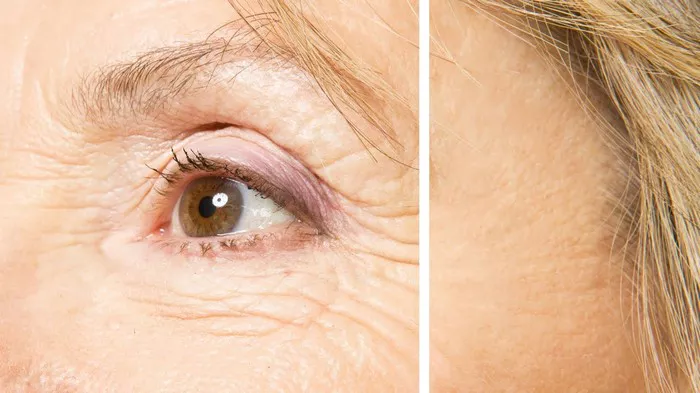Wrinkles and sagging skin are common signs of aging that can make you look older than you feel. While aging is a natural process that cannot be stopped, there are several factors that can accelerate the development of wrinkles and sagging skin. In this article, we will explore the causes of wrinkles and sagging skin, including the science behind how they develop and tips for preventing and treating these signs of aging.
The Science Behind Wrinkles and Sagging Skin
Wrinkles and sagging skin are caused by a combination of factors, including genetics, sun exposure, and the natural aging process. As we age, our skin becomes less elastic and less able to retain moisture, which can lead to the formation of wrinkles and sagging skin.
Sun exposure is also a major contributor to wrinkles and sagging skin. UV radiation from the sun can damage the collagen and elastin fibers in the skin, which can lead to sagging, wrinkles, and other signs of aging.
Causes of Wrinkles and Sagging Skin
Aging
Aging is the most common cause of wrinkles and sagging skin. As we age, our skin becomes less elastic and less able to retain moisture, which can lead to the formation of wrinkles and sagging skin.
Sun Exposure
Sun exposure is a major contributor to wrinkles and sagging skin. UV radiation from the sun can damage the collagen and elastin fibers in the skin, which can lead to sagging, wrinkles, and other signs of aging.
Smoking
Smoking is another major cause of wrinkles and sagging skin. Smoking can damage the collagen and elastin fibers in the skin, which can lead to sagging, wrinkles, and other signs of aging.
Poor Nutrition
Poor nutrition can also contribute to wrinkles and sagging skin. A diet that is low in antioxidants and other skin-nourishing nutrients can lead to the development of wrinkles and sagging skin.
Dehydration
Dehydration can also contribute to wrinkles and sagging skin. When the skin is dehydrated, it becomes less elastic and less able to retain moisture, which can lead to the formation of wrinkles and sagging skin.
Preventing and Treating Wrinkles and Sagging Skin
Protect Your Skin from the Sun
One of the most important things you can do to prevent wrinkles and sagging skin is to protect your skin from the sun. This means wearing sunscreen, hats, and protective clothing when you are outside.
Quit Smoking
If you smoke, quitting can help prevent wrinkles and sagging skin. Smoking can damage the collagen and elastin fibers in the skin, which can lead to sagging, wrinkles, and other signs of aging.
Eat a Healthy Diet
Eating a healthy diet that is rich in antioxidants and other skin-nourishing nutrients can help prevent wrinkles and sagging skin. This means eating plenty of fruits, vegetables, whole grains, and lean protein.
Stay Hydrated
Staying hydrated can also help prevent wrinkles and sagging skin. When the skin is hydrated, it is more elastic and better able to retain moisture, which can help prevent the formation of wrinkles and sagging skin.
Use Skincare Products
Using skincare products that are designed to prevent wrinkles and sagging skin can also be helpful. Look for products that contain antioxidants, retinol, and other skin-nourishing ingredients.
Conclusion
Wrinkles and sagging skin are common signs of aging that can make you look older than you feel. While aging is a natural process that cannot be stopped, there are several factors that can accelerate the development of wrinkles and sagging skin. By protecting your skin from the sun, quitting smoking, eating a healthy diet, staying hydrated, and using skincare products, you can help prevent and treat these signs of aging. If you have any questions or concerns about wrinkles and sagging skin, be sure to consult with a skincare professional.


